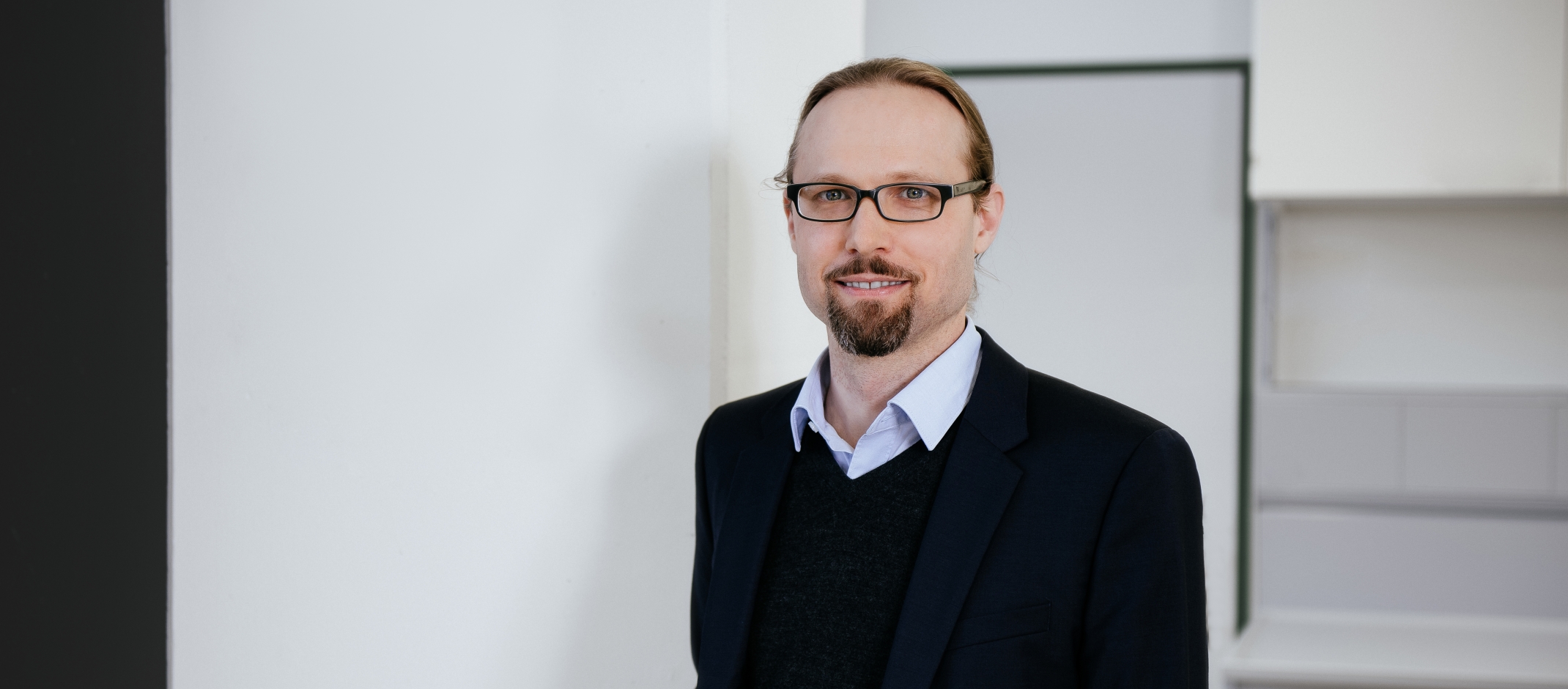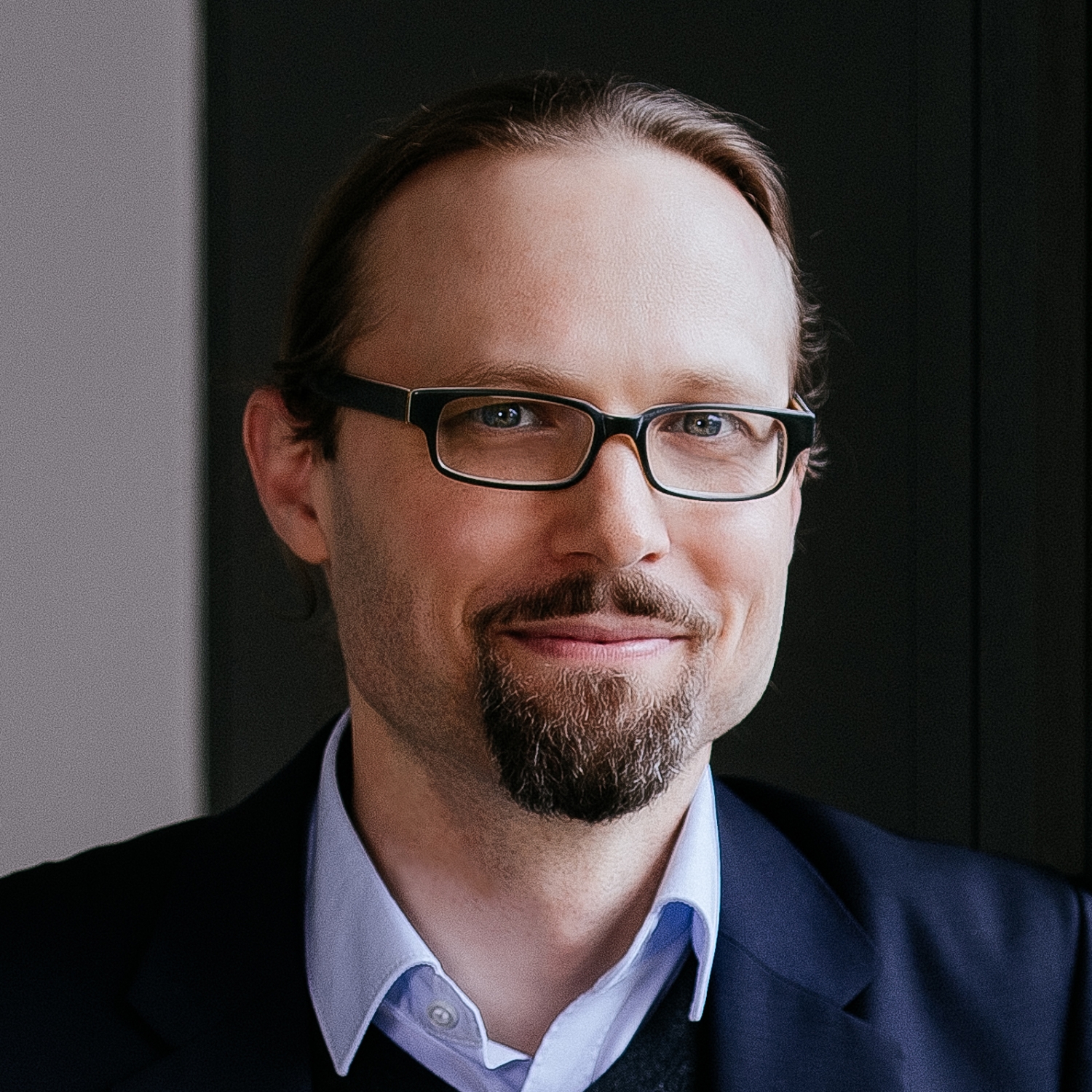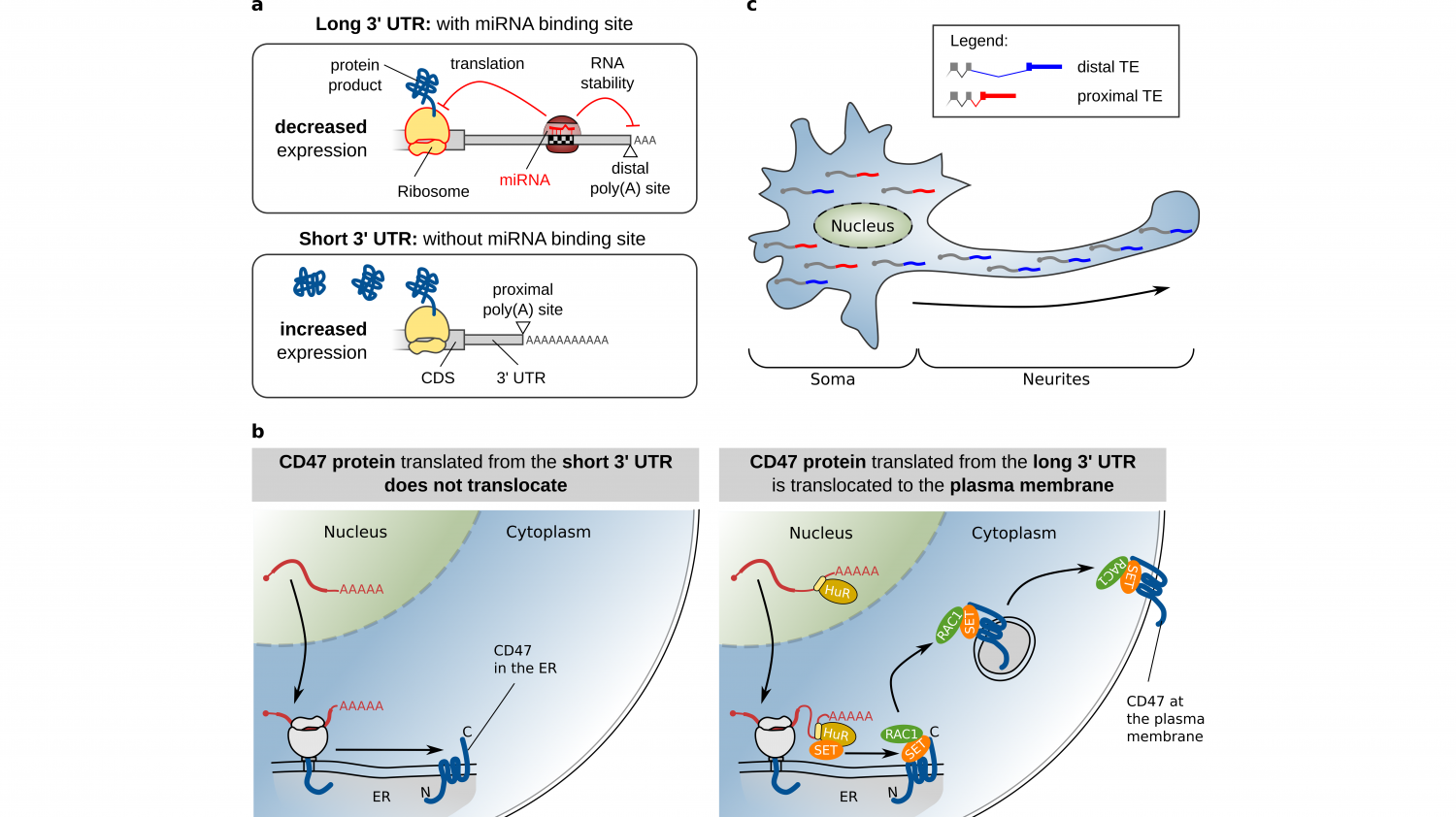A good first impression and a broad perspective

What is it like to set up your own research group and kick off your career at a new university? To find out, we head to the top floor of the University of Konstanz and visit Andreas Gruber, a tenure-track professor of applied bioinformatics.
On level 12 of building P, Andreas Gruber is in the middle of setting up and moving into the new space for his research group. The signs are just being put up on the doors, and boxes are still being unpacked in his office. Looking out the window on level 12, you can see the entire campus panorama, from the bus loop to the current construction site and the skyline of the buildings where lectures take place. This broad perspective fits Andreas Gruber to a T. He is a researcher who really wants to get the full picture. In Andreas Gruber's case, he takes a close look at areas of the cell that are not yet well characterized. For example, he studies the regulatory role played by the ends of genetic sequences. Dysregulation at this location is the main cause of certain illnesses and often plays an important role in complex illnesses such as cancer. In addition to studying every part of genes, Andreas Gruber also thinks it is important not to just focus on "the five favourite genes", but to take a holistic view of the cell's processes.
"The cell is a system made up of many millions of different molecules. This means that, if you formulate a hypothesis about a certain molecule without looking at the whole picture, you might actually overlook the actual key events. This is exactly why we employ an approach that is as holistic as possible. By analyzing large amounts of data from high-throughput methods using new bioinformatics approaches, we are trying to get the broadest possible picture of a specific cellular state".
Andreas Gruber
But, wait a minute: What exactly does Andreas Gruber's research group study?
"Our aim is to understand the regulation of gene activity in healthy as well as in diseased cells at different molecular levels. This is why we analyze large amounts of data. High-throughput sequencing methods make it possible to measure the activity of many genes simultaneously. It can also be used to identify differences in genetics and characterize their influence on gene activity. The important thing is that this allows us to look at the cell as a whole in order to identify and characterize the most important regulatory changes without being limited to individual genes or gene segments from the start".
The development of new analysis methods plays a major role in this process. Now, there are many tried-and-tested standard procedures used in gene sequencing and bioinformatics. However, these standard procedures do not necessarily lead to fundamentally new insights. Gruber says:
"In the field of bioinformatics, it is essential to contribute to designing the latest analysis methods, because this makes it possible to ask innovative research questions and investigate new cellular aspects that, so far, have remained under wraps. This is why our research group is continually developing new data science methods for deriving new aspects from high-throughput experiments.
The development of new analytical approaches is so essential for us because otherwise we would be limited to looking into molecular aspects that have been studied for many years and which, in many cases, have already been well characterized. In order to work with as many research groups as possible here in Konstanz on this innovative and interdisciplinary work, I got right to work on developing a prototype for a data science platform. Now, for the first time ever, there is a platform that can derive key regulators of all important levels of cellular RNA synthesis using high-throughput sequencing. On the basis of this prototype and the initial data it provided, we were able to successfully apply for external funding to fully develop the platform for use in Konstanz in the next few years. This will enable us to gain new insights into complex regulatory processes that cannot be studied using existing analysis methods.
© Andreas GruberThe synthesis and localisation of RNAs and proteins are also regulated by the non-protein-coding 3'-ends (3'UTRs) of the RNAs. (a) Short RNAs, so-called miRNAs, bind the 3'UTRs and can thereby regulate the stability of the RNA and its translation into proteins. The 3'UTRs of RNAs also contain regulatory elements that can determine the localisation of (b) the encoded proteins and (c) the RNA itself. Source and further information: Figure based on Gruber et al. 2019, Nat Rev Genet, https://doi.org/10.1038/s41576-019-0145-z
I am really looking forward to using the finished platform because it will open up many more opportunities for collaboration here in Konstanz in addition to strengthening research over the long term. By using such innovative bioinformatic analysis methods, which are not yet widely used commercially, we will be able to gain new insights into cellular processes that have already been studied in other ways. Our collaboration partners studying cellular systems can then follow up on this work and shed light on these processes".
For Andreas Gruber, research is clearly a collaborative process, and, in his view, good collaboration is a pre-requisite for cutting-edge research.
"I have always been a team player when it comes to research. In my experience, long-term research synergies deliver the best results, and I enjoy working in interdisciplinary research networks the most. For this reason, I was on the lookout for a place where I could develop collaborations that I could deepen and expand upon over time".
Andreas Gruber chose to set up his research group at the University of Konstanz.
"I actually was in the luxurious situation of having offers from two other attractive research institutions. Interestingly, however, the decision was easy for me. First of all, I had gotten a very positive first impression at my hearing here in Konstanz. Everyone took a lot of time for me, and I was able to spend two days engaging in interesting discussions with my current colleagues about our research interests.
I quickly noticed the special atmosphere between research groups in Konstanz. Since it was very important for me to work in an environment that emphasizes research synergies and mutual respect, the good atmosphere in Konstanz made a lasting impression on me".
Yet, it was more than this impression that led Andreas Gruber to Konstanz:
"Of course I didn't want to make such an important decision based solely on my first impression. That's why I carefully weighed in all the important factors for my research, and again I arrived at a clear 'yes' to Konstanz".
In the spring of 2021, Andreas Gruber arrived in Konstanz, in the middle of the coronavirus pandemic. Despite the difficult conditions of the pandemic, he had a smooth transition into the new research environment. From day one, it was important to him to contact his research colleagues and look for potential collaboration partners. He considers this collaboration to be essential for his future research. Just a few weeks after his arrival, he was right in the thick of research activities in Konstanz.

"In Konstanz, there is truly enormous willingness to engage in interdisciplinary research. Since I arrived, I have been in contact with around 15 to 20 research groups to discuss concrete research questions and potential research collaborations. This is the environment that I had always envisioned and hoped for".
Even after just 2.5 years of being here, I can say that my plan to build long-term research synergies here has born fruit. I have already had the chance to help shape research networks, something that is incredibly exciting for me and that I really see as a great privilege. Even in this short period, I have been involved in a total of five joint proposals, which was very important for me because, especially while you are setting up your research group, you need to generate positions for academic staff who can then work on specific collaborative projects".
Andreas Gruber has a broad network at the University of Konstanz. He is involved in several large Konstanz research networks including the research priority Molecular Principles of Life, the Centre for Human | Data | Society and the Collaborative Research Centre/Transregio 353 Regulation of cell death decisions. He also leads the NFG027 junior research group. For Andreas Gruber, collaboration between departments is a clear prerequisite for innovative research:
"In the past, I have already worked on developing new high-throughput sequencing methods. Based on this experience, I know just how important it is for research to combine perspectives from chemistry, biology and data science, in order to develop innovative methods and thus open the door for the observation of previously unknown molecular mechanisms.
From the start, I have been very impressed by the intensity of the interdisciplinarity of research culture in Konstanz. As I said, with my interdisciplinary approach, this was exactly what I was looking for. The biology and chemistry departments at the University of Konstanz are very closely interconnected. This provides an ideal set-up for the development of new methods and is a perfect fit for our research group working to develop new data science methods. Accordingly, I really look forward to studying the regulatory mechanisms at the interface between RNA and protein biosynthesis together with my colleagues here in Konstanz over the next few years".

